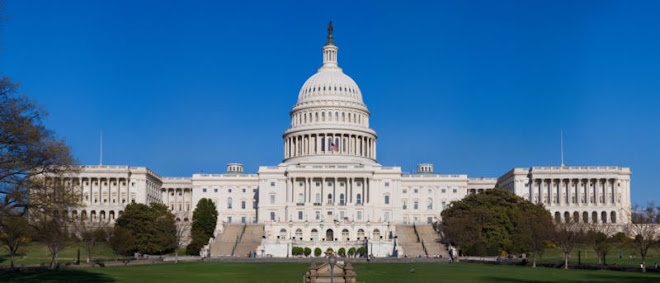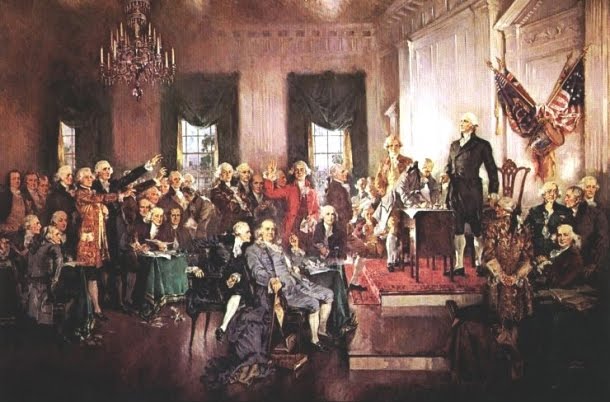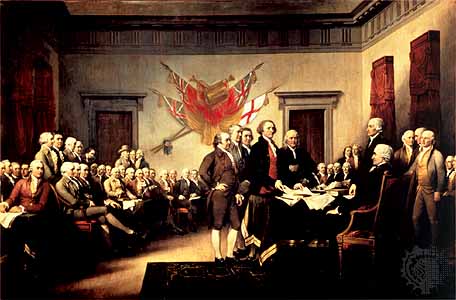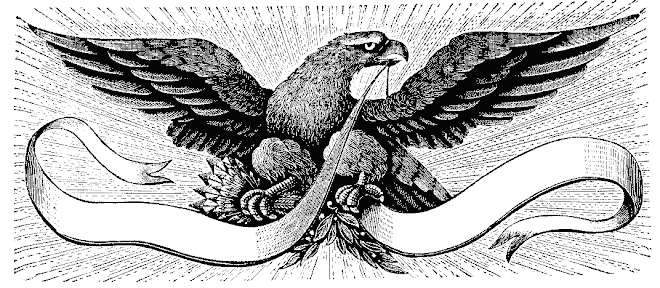From American Vision and Vision To America:
101 Thoughts on America’s Economy
By Dr. Gary North
Published: June 24, 2010
Share Print XHello there! If you are new here, you might want to subscribe to our RSS feeds for updates on this topic and others.
1. The crucial objective factor promoting economic
growth in a private property social order is per capita
investment.
2. Americans save less than 5% of household income.
3. The Federal Reserve System runs the show
economically; Congress doesn’t.
4. Here is the supreme symbol of the chain of
command: Congress will not audit the Federal Reserve.
5. The politics of delay is the supreme mark of
today’s political order.
6. The Medicare budget is the single most important
source of the Federal deficit, long-term.
7. Social Security is in second place.
8. Congress will eventually have to cut the benefits
promised to oldsters in order to delay outright bankruptcy.
9. Congress will not cut the budgets of Social
Security and Medicare in one fell swoop.
10. Oldsters vote at a higher percentage than any other
age group.
11. The oldsters’ lobbies are greatly feared on
Capitol Hill — probably more feared than any other.
12. The oldsters vote as a monolithic bloc on the
twin issues of Social Security and Medicare.
13. Congress knows that these twin issues are the
third rail of American politics. He who touches it dies.
14. Oldsters are the dominant bloc within the Tea
Party.
15. The Tea Party movement will not challenge Social
Security and Medicare.
16. The Tea Party movement is therefore impotent to
reverse the march to Federal bankruptcy.
17. There is no voting bloc that will make the
balanced budget a non-negotiable demand.
18. Congress will therefore not balance the budget.
19. A Federal deficit in the range of $1.5 trillion
was accepted by the public in 2009 and 2010.
20. The Federal budget deficit will remain close to
$1 trillion a year for another decade, according to the
government.
21. Both Social Security and Medicare are running
deficits, and will continue to.
22. The FICA tax revenues long generated by Social
Security in excess of Social Security expenditures will no
longer be available to mask the on-budget deficit.
23. Most voters are unaware of this.
24. Most Congressmen pay no attention to this.
25. Most Congressmen will continue to pay no public
attention to this.
26. Most Congressmen vote to kick the can down the
road for another year.
27. Most voters believe that they, as taxpayers, will
never be required to pay the debts of the government.
28. Most Keynesian economists teach that Federal
deficits don’t matter, except when the deficits are not
large enough to stimulate the economy.
29. Most non-Keynesian economists teach that Federal
deficits don’t matter today, although deficits will matter
eventually — somewhere, over the rainbow, way up high.
30. Most economists believe that economic growth will
enable all Federal debts to be rolled over at relatively
low interest rates.
31. Most economists believe that central bank
policies can sustain economic growth most of the time.
32. Most economists do not foresee a great depression.
33. Most economists have said that Federal Reserve
policy in 2008 was necessary: a doubling of the monetary
base.
34. Most economists have remained either supportive
or silent about the Federal deficits in 2008, 2009, and
2010.
35. Most economists deny that either hyperinflation
or long-term deflationary depression is possible for the
United States.
36. Most economists believe that, at some price, every
problem can be solved.
37. Most economists believe that these problem-
solving prices will be affordable to most people.
38. Most economists believe that there will not be a
default by the U.S. government on its debt.
39. Austrian School economic theory teaches that
politicians defer solutions until the problems cannot be
solved at politically acceptable prices.
40. Austrian School economists teach that government
makes existing problems either more expensive to solve or
illegal to solve.
41. Austrian School economists teach that government-
imposed solutions create new problems.
42. Austrian School economists teach that government-
created problems are likely to be cumulative until a fiscal
or monetary crisis leads to a default on government debts.
43. Austrian School economists note that the one
exception — Great Britain after 1814 — was not a mass
democracy with Social Security and Medicare.
44. Austrian School economists also note that there
was an international gold standard from 1815-1914.
45. Most non-Austrian economists dismiss Austrian
School economics as: (a) outmoded, (b) ideological, (c)
methodologically amateurish, (d) pessimistic, and/or (e)
crackpottery.
46. Most investment fund managers have been educated in
Keynesian-dominated universities.
47. Most investors trust fund managers.
48. Most fund managers believe that there can never
be a default on the Federal debt.
49. Most fund managers are concerned about beating
other funds’ performances by the end of the quarter.
50. Most fund managers believe they can beat the
average: Lake Wobegone economics.
51. Most fund managers know that Warren Buffett will
beat them, even though random-walk theory says he can’t.
52. Most fund managers have never read Austrian
School economics, but they are in agreement with non-
Austrian School economists regarding the Austrian School.
53. Most Americans say they do not trust Congress,
but they trust the FDIC, Medicare, Social Security, and
Homeland Security.
54. Most Americans think that a comfortable
retirement is a moral right for all American citizens.
55. Most Americans expect to retire in relative
comfort no later than age 67.
56. Few Americans have used a free Web-based life
expectancy calculator to estimate how much longer beyond
age 67 they are likely to live.
57. Few Americans have ever used a free Web-based
retirement portfolio calculator to see how much income they
will need after age 67.
58. Few Americans have ever factored in price
inflation when considering retirement living.
59. Few American parents ever discuss with their
children who will inherit what.
60. Few American parents ever discuss with their
children who will have to do what in order to receive an
inheritance.
61. Older Americans do not believe that younger
workers will ever stage a successful revolt against
Medicare and Social Security.
62. Few younger workers have recognized that such a
revolt is politically likely when the costs of these
programs threaten the Federal government’s solvency.
63. Few Americans understand that monetary inflation
produces price inflation.
64. Few Americans understand that price inflation can
be a way for the government to disguise its default on its
debts.
65. Few Americans understand that price and wage
controls distort production, produce shortages, and reduce
most people’s wealth.
66. Most Americans in the past believed politicians
when the latter blamed the resulting shortages on hoarders
and black marketeers.
67. Most Americans believe politicians who blame oil
companies for gasoline price increases.
68. Most Americans believe that Chinese workers will
sell them cheap goods forever.
69. Most economists believe that China’s central bank
will continue to buy Treasury bills at close to a zero
interest rate indefinitely.
70. Most Americans and most economists therefore
believe in free Chinese lunches (“hold the MSG”).
71. Most Americans believe that Franklin Roosevelt
saved capitalism from itself.
72. Most Americans believe that without tax-funded
education, millions of American children would never learn
to read or do arithmetic above a second-grade level (as if
they were graduates of inner-city high schools).
73. Most Americans believe that without government-
funded safety nets, millions of Americans would be trapped
in lifelong poverty (as if they were fourth-generation
welfare clients).
74. Most Americans believe that a little price inflation
is preferable to a recession.
75. So do most economists.
76. Some Americans are beginning to doubt that
Federal deficit spending on stimulus programs will restore
economic growth.
77. Hardly any economists have doubted this.
78. Most economists believe that high rates of income
taxation on the rich will not reduce investment and
economic growth.
79. Most voters agree that the rich should pay their
fair share, which is at least double the rate most Americans pay.
80. Most economists believe that a high death tax
(“estate tax”) is a good policy, even though estate taxes
result in very little revenue.
81. Most voters agree.
82. Most economists believe that municipal
governments will never default on their bonds.
83. Most rich investors agree.
84. When long-term rates rise, bonds fall in value.
85. Price inflation produces rising long-term rates.
86. Monetary inflation produces price inflation.
87. The Federal Reserve doubled the monetary base in
late 2008.
88. Only bankers’ unwillingness to lend money has
kept this increase from doubling M1.
89. Few Americans understand the logic or history of
the gold coin standard, 1815-1933.
90. Few Americans have ever seen a gold coin.
91. There are very few retail coin companies that
sell gold coins.
92. In a monetary panic, their toll-free lines will
be busy.
93. Most economists deny that there can be an
inflationary monetary panic — only a deflationary monetary
panic (e.g., October 2008).
94. The average price of a house in Detroit is
$7,000.
95. The U.S. government owns Fannie Mae and Freddie
Mac, which supply at least 90% of home mortgages.
96. The rate of foreclosures is increasing.
97. Banks are refusing to lend money to local
businesses.
98. Local businesses supply most of the new jobs.
99. The unemployment rate is close to 10%.
100. Employment supports the housing market.
101. “Things that cannot go on forever have a tendency to
stop.” — Herbert Stein
A READER ON THE STATE OF THE POLITICAL DECAY AND IDEOLOGICAL GRIDLOCK BETWEEN ONE GROUP WHO SEEK TO DESTROY THE COUNTRY, AND THOSE WHO WANT TO RESTORE IT.
The Rise and Fall of Hope and Change




Alexis de Toqueville
The American Republic will endure until the day Congress discovers that it can bribe the public with the public's money.
Alexis de Tocqueville
Alexis de Tocqueville
The United States Capitol Building

The Constitutional Convention

The Continental Congress

George Washington at Valley Forge



No comments:
Post a Comment